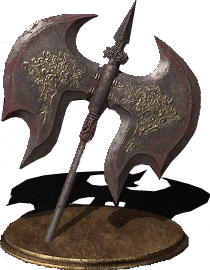

With this move, Black offers a free pawn for White, if White takes it, Black does not change his queen, he puts the King in check and gets a winning position.īlack is preparing an attack by putting his kingside bishop on the long diagonal. White could also sacrifice his f3 pawn and get a better development. Play Nc3 and try to sacrifice your f3-pawn White regains the sacrificed bishop with a completely winning position. The drawback for White by playing f3, is that he also ends up blocking his own knight from developing and weakening the squares around the king. White’s idea is to strengthen his e4 pawn with his f3 pawn (to get a stronger grip on the center). This variation leads to very tricky and tactical games where multiple attacks can happen (from both sides). Why play the Tartakower (Fantasy) Variation? The Fantasy Variation of the Caro–Kann Defence appears on the board after the following moves: White should castle Kingside to protect his King.īlack wants to put his dark squared bishop on the long diagonal, castle kingside (to protect the king), and put his light-squared Bishop on g4, from where it pins the Knight on f3 and hinders White’s development. This can happen with the joint forces of the Bishop, which pins Black’s knight to his king, and the queen, which goes to a4. He deals with the danger to take on the e4-pawn by capturing himself on d5.īy playing c2-c4, White wants to put as much pressure as possible on Black’s center.

This is the safest option for White (if he is looking to draw) because White has conceded most of his opening advantage and made the position symmetrical. The Exchange Variation of the Caro–Kann Defence appears on the board after the following moves: If you are White, never put your bishop on d3. Black has a tempo up, and White has a Queen on d3, which is absolutely misplaced (since all the light squares are blocked off) Then he develops his pieces to put more pressure on the e5-pawn.īlack’s worst piece is his light squared bishop.īy trading Bishops, Black rid of his worst piece, and gets a solid pawn structure in the center.

With the c6-c5 break, Black wants to break up White’s pawn structure. Then he pushes his b-pawn to open up Black’s pawn structure on the Queenside (so he can attack on that flank). With the c4-c5 break, White wants to initiate trading of queens and disable Black’s dark-squared Bishop. If Black still wants to create a pawn triangle in the center, white pushes his g4 pawn and traps the bishop.

With the move: 4.h4, white is immediately threatening to trap the Bishop. Then Black can close down his “pawn triangle” defense with e6.īlack has a solid central structure and White has more space in exchange. White wants to move his e4 pawn forward to e5, to gain central space and more mobility for his pieces.īlack wants to play Bf5, (to put his lightsquared bishop outside of the pawn chain). The Advance Variation of the Caro–Kann Defence appears on the board after the following moves: In exchange, White claims a stronger grip in the center of the board and hopes to take a lead in controlling the center of the board. Putting the pawn on f3 strengthens White’s central e4 pawn, but blocks White’s knight from developing and weakening the squares around the king. The Tartakower (Fantasy) Variation is one of the most aggressive lines for White in the Caro Kann Defence from black. This is the most passive way for White to play (since White conceded most of his opening advantage). In the Exchange Variation, White takes Black’s pawn on d5 with his e4 pawn. It is a solid defence for Black, who creates a pawn triangle in the center and gets rid of his potentially weak bishop. The Advance Variation is one of the most popular ways for White to deal with the Caro-Kann Defence. In the main line, there are three variations, the Advance Variation, the Exchange Variation and the Tartakower (Fantasy) Variation.


 0 kommentar(er)
0 kommentar(er)
